The Churches of the MRC of Brome-Missiquoi: The secret codes hidden in their ornaments
When you take some time to observe the interior of churches you are, in fact, decoding some of the ideologies that support their decorating designs in their architecture, their adornments and their furnishings. In truth, the different denominations have developed, throughout the years, a manner of doing things that allow us to recognize their practices and the distinctive elements which serve to celebrate each faith.
The Architecture
In general, the architecture found inside a church reflects what’s going on outside: A modest decoration in the image of the Meeting-House-style church, columns and ogival shapes in the Neo-Gothic churches, a vaulted ceiling for the Neo-Romanesque style churches.
THE ST-ROMUALD CHURCH
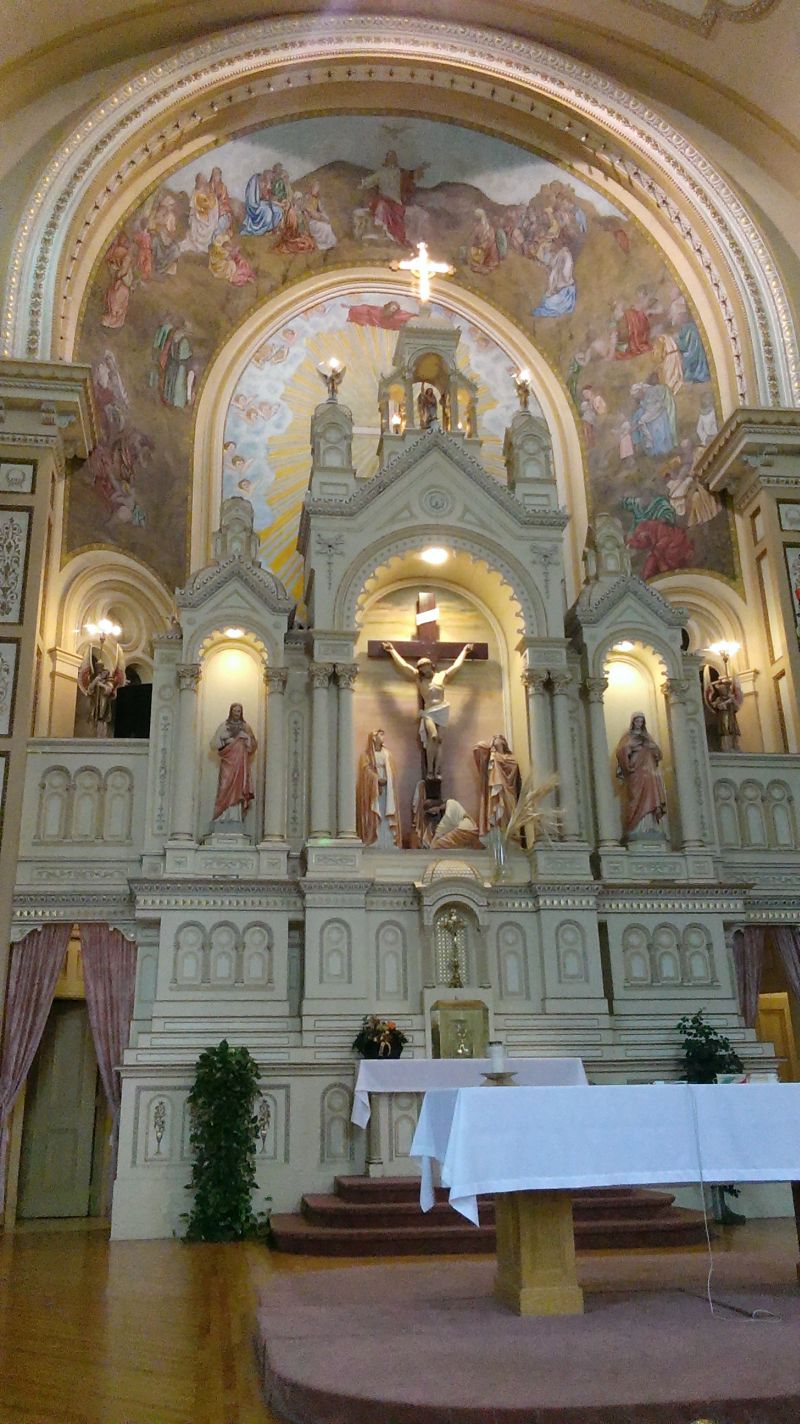
The adornments for the chancel of St-Romuald church in Farnham reflect its rich and sumptuous character influenced by the Neo-Romanesque style. The neoclassical signature is presented through its composite-capital columns, its semi-circular arches and its pinnacles. The painted decor also adds to its monumental overall aspect.
In most churches of the MRC, the floor plan is rectangular. Some of the Catholic and Anglican churches have protrusions or transepts set laterally through the chancel to form a Latin cross floor plan. Modern churches are designed without these prescriptions.
Adornments
The adornments are made up of statues, works of art, brick designs, finely worked cornices, balustrades, columns and pilasters and many other features. Each denomination elaborates how they are laid out inside the temples. In Protestant churches there are no, or very little, iconic objects. The woodwork is often the most important aesthetic element. On the contrary, in Catholic churches, the decoration is colourful, the art work—statues, frescoes and ironwork—describe the life of Jesus or that of the saint to whom the church is dedicated.
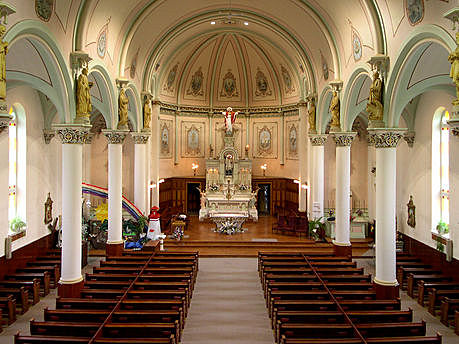
Photo : Conseil du patrimoine religieux du Québec
In the Saint-François Xavier church of Bromont, the rows of parallel columns topped with a statue, its vaulted ceiling and furnishings centred in the front section, lead worshippers to look towards the chancel where they celebrate their faith.
STAINED GLASS IN CHURCHES
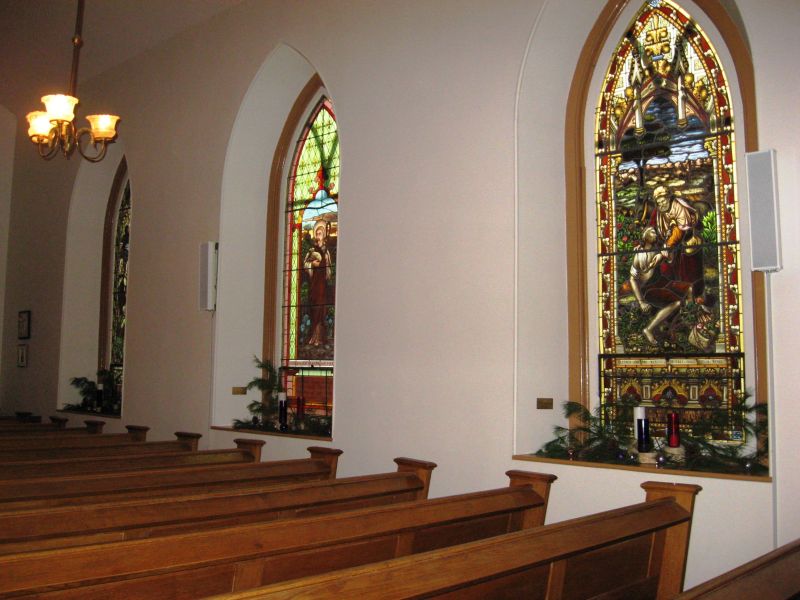
First made with colour stains to dim the light and create an ambiance, during the Middle Ages, stained-glass windows were used to educate worshippers by describing the life of saints and episodes of the bible. In the Protestant churches of the MRC, they describe local events. In Cowansville, for instance, in the Anglican Trinity church, a contemporary stained-glass window is dedicated to parish-born soldiers who gave their lives during the First World War. In the town of Lake-Brome, the United church of Knowlton has a stained-glass window depicting a good Samaritan theme and commemorates one of its parishioners.
The Furnishings
Furnishings are made up of all the artefacts used in cult celebrations. They represent what is important for worshippers. The ritual area is placed in the front. In liturgical based denominations—Catholics and Anglicans—the chancel is elevated and sometimes enclosed with a balustrade. If there is no pedestal or enclosure, notably with Evangelist churches, the space might be identified through a more ornate setting, for example by adding pilasters.
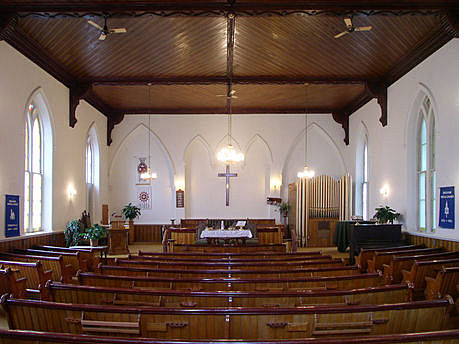
Photo : Conseil du patrimoine religieux du Québec
The chancel of the Emmanuel United Church in Cowansville is simply marked by ogival shapes set on its walls. The table in the front enhances the Scriptures. The pipe organ is to the right.
Liturgical churches place the baptismal fonts, the pulpit for preaching and an altar in their chancel, whereas the Evangelists own furnishings that enhance the table where we find the Scriptures. The Catholic churches also own sometimes quite elaborate ironworks used for their sacraments.
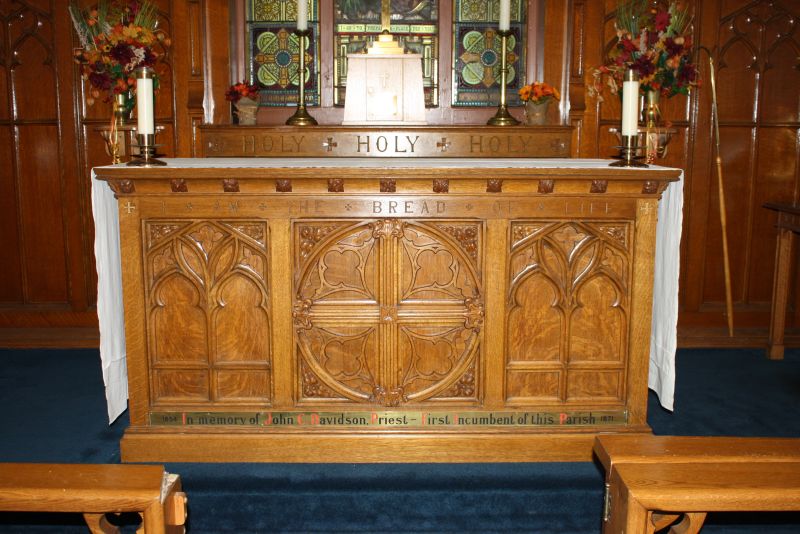
The sculpted altar of the Trinity Church in Cowansville presents its use of woodwork as an aesthetic element to create a warm ambiance, enhancing the richness of different wood types.
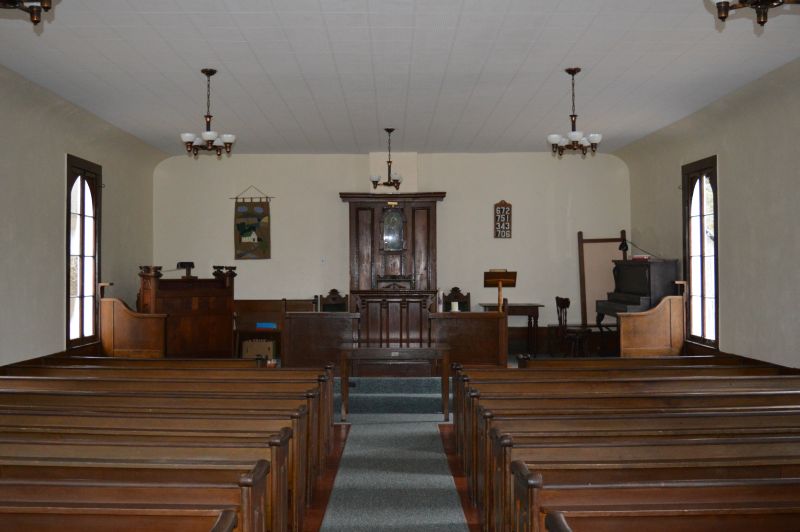
In the MRC of Brome-Missisquoi, the limited local resources and the need to pray, brought about the establishment of a union of churches that were able to distinguish themselves with furnishings configurations common to several denominations. The United Church of Fulford, in the Town of Lake-Brome, presents an integrated place of worship. We find one section elevated with an altar, a place for preaching and an enclosure outlining this sacred space, thus answering the needs of Catholic and Anglican churches; whereas the table in the chancel is the focal point used by the Evangelist denominations.
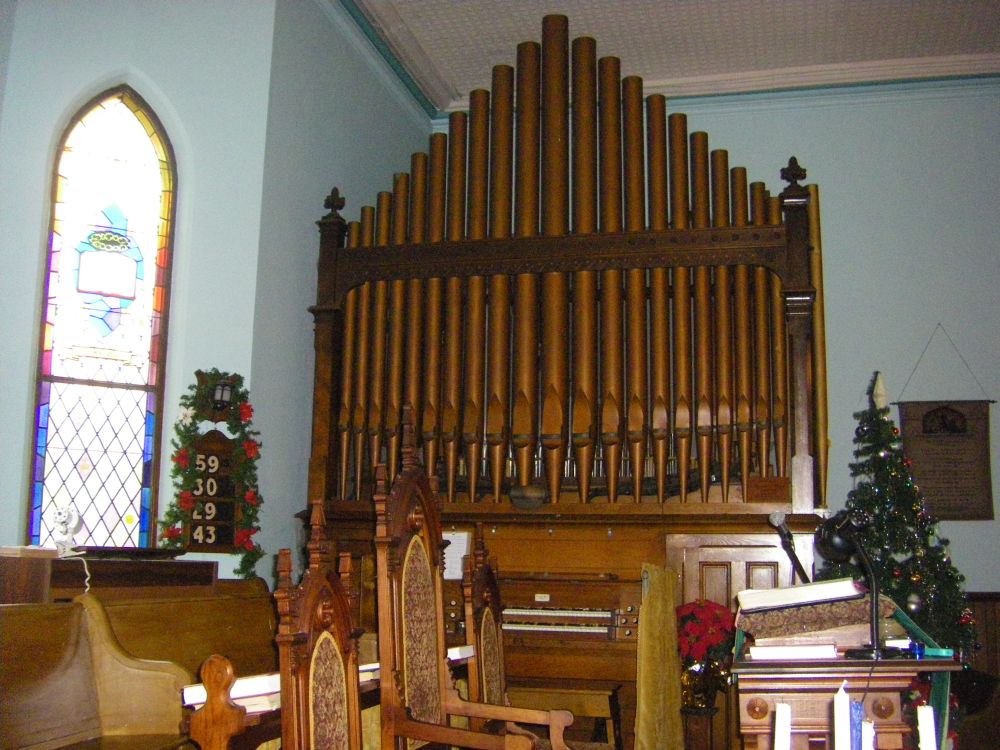
Whether the practice is Catholic or Protestant, music plays an important part in each cult celebration because it encourages listening and receiving the words of the Gospel. In Protestant churches, we often find the organ in immediate proximity to the chancel. In Catholic churches, the organ is a prestigious instrument and is the pride of the community who invested in its purchase.
Whether by bike or by car come and visit the different municipalities of the MRC and walk inside one of its churches, whether grandiose or modest, they all reflect the communities who built them. Take some time to discover the well-kept secrets of their interior layouts
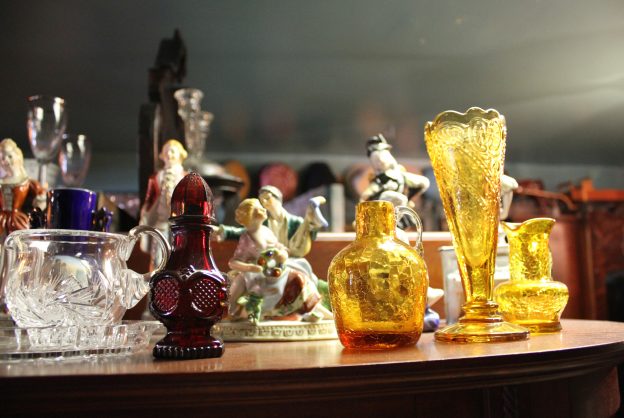
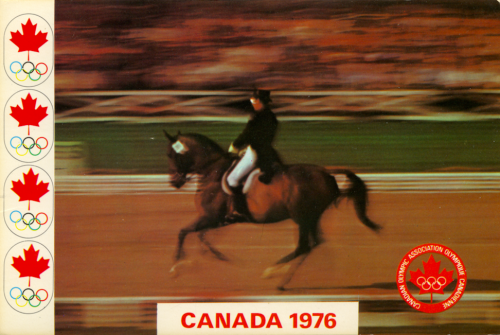
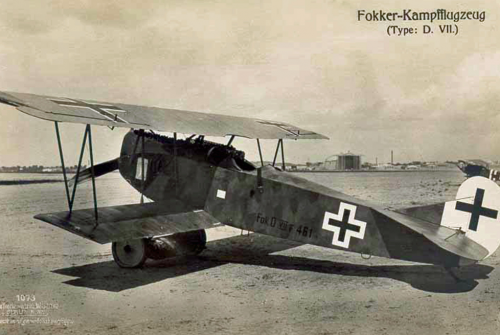

1 comments